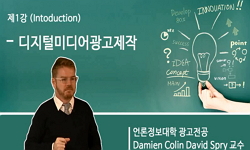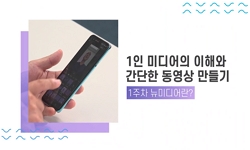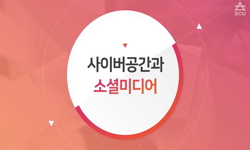This study analyzed the digital divide of Korean senior citizens through the preference for smart media. Targeting two media out of mobile internet and mobile social media, the media dependency ratio and the trend of people in their 20s-60s were verif...
http://chineseinput.net/에서 pinyin(병음)방식으로 중국어를 변환할 수 있습니다.
변환된 중국어를 복사하여 사용하시면 됩니다.
- 中文 을 입력하시려면 zhongwen을 입력하시고 space를누르시면됩니다.
- 北京 을 입력하시려면 beijing을 입력하시고 space를 누르시면 됩니다.

The Comparative Analysis on the Digital Divide of Senior Citizens through the Preference for Mobile Internet and Social Media
한글로보기https://www.riss.kr/link?id=A105521644
-
저자
Kyoung-ryul Park (광운대학교) ; Jeong-lae Kim (을지대학교)
- 발행기관
- 학술지명
- 권호사항
-
발행연도
2018
-
작성언어
English
- 주제어
-
등재정보
KCI등재
-
자료형태
학술저널
-
수록면
119-126(8쪽)
- DOI식별코드
- 제공처
-
0
상세조회 -
0
다운로드
부가정보
다국어 초록 (Multilingual Abstract)
This study analyzed the digital divide of Korean senior citizens through the preference for smart media. Targeting two media out of mobile internet and mobile social media, the media dependency ratio and the trend of people in their 20s-60s were verified. Regarding the dependency ratio of young people(20s) and senior citizens(60s), in case of mobile internet, people in their 60s were average 8.6% while people in their 20s were average 38.9%, so that the ratio of senior citizens was lower by 30.3%. In case of social media, people in their 60s were average 1%, which was 7.1% lower than people in their 20s(8.1%). And this divide was the digital divide shown in the informatization process through the trend of internet use of senior citizens in their 60s or up. Thus, as the policy measures for solving the digital divide of senior citizens, it would be required to continuously develop the digital cultural programs for senior citizens, to expansively perform the government subsidiary policies like additionally providing the essential information to senior citizens, and also to expand the smart-based infrastructure for senior citizens' participation in economic activities.
목차 (Table of Contents)
- Abstract
- 1. Introduction
- 2. Statistical Implications of Media Dependency Ratio and Research Methods
- 2.1 Statistical Data of Media Dependency Ratio
- 2.2 Composition of Media Subject
- Abstract
- 1. Introduction
- 2. Statistical Implications of Media Dependency Ratio and Research Methods
- 2.1 Statistical Data of Media Dependency Ratio
- 2.2 Composition of Media Subject
- 3. Analysis on the Digital Divide and Acceptance Behavior of Mobile Internet & Social Media of Senior Citizens
- 3.1 Mobile Internet Media Dependence and Digital Divide
- 3.2 Analysis on the Social Media Dependence and Digital Divide
- 4. Conclusions
- References
동일학술지(권/호) 다른 논문
-
- 한국인터넷방송통신학회
- YeounOuk Shin
- 2018
- KCI등재
-
Pose Estimation with Binarized Multi-Scale Module
- 한국인터넷방송통신학회
- Yong-Gyun Choi
- 2018
- KCI등재
-
- 한국인터넷방송통신학회
- Yeonjae Lee
- 2018
- KCI등재
-
Design and Implementation of Vehicle Internal Alarm System using Raspberry-pie Multi-sensor
- 한국인터넷방송통신학회
- MyeongBok Choi
- 2018
- KCI등재




 eArticle
eArticle






